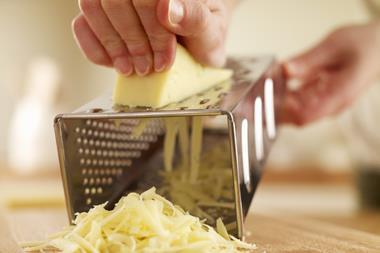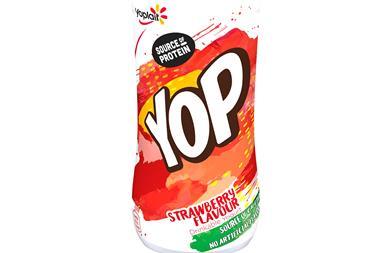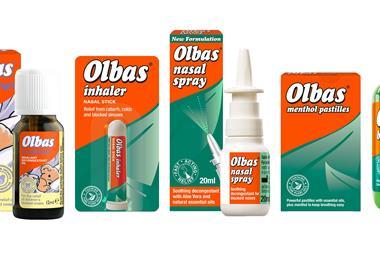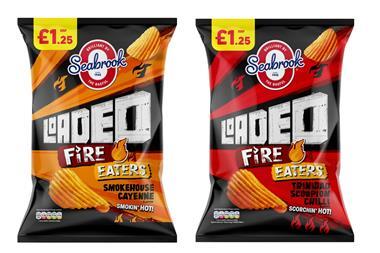Sales of organic food and drink broke the £1bn barrier for the fifth year in a row in 2005, establishing the category as a truly mainstream commodity. Consumers trust and respect organic products to the extent that several brands have earned cult status. Organic baby food brands, for example, have overrun the total baby foods market for several years now and organic dairy brand Yeo Valley is giving conventional yogurt names a run for their money.
Organic fruit and vegetables retain the lion's share of the organic market with a combined 35% value share, up from 30% in 2001/02. Dairy commands second place with a 22% share, driven by growing sales of organic milk, yogurt and, to a lesser extent, ice cream and cheese (Key Note, Organic Food, 2006). Both categories are seen as entry points for consumers into this market and are therefore influential ambassadors for the organic cause.
Yeo Valley marketing director Ben Cull comments: "Organic products are seen as pure, having great taste and being environmentally sound. They are also seen as offering the best start for the family. With fruit and vegetables, what you see is what you get. Equally, dairy products are generally consumed by the whole family, so for many consumers wanting to introduce more organic products, dairy is the natural choice."
While fruit and vegetables and dairy are benchmark categories, meat and poultry are trailblazing their own path. Between 2000 and 2005, organic meat and poultry experienced the most impressive increase in value of all the organic categories, having grown by 150% (Mintel, Organics in the UK). According to Bob Kennard at Graig Farm Organics, reduced prices and demand for better quality food are encouraging consumers to buy into this market. "There has definitely been a price reduction over the past few years in real terms, which has made the differential between prices of organic and non-organic meat less daunting. Originally, it was consumers in the upper income bracket who bought organic meat, but this isn't the case anymore; people with children are buying a lot more organic food generally."
Words of warning
Beef and lamb are particularly popular, explains Kennard, but he remains concerned about whether current levels of growth can be sustained. "There is already an undersupply in the UK and retail prices aren't reflecting production costs. If the current price structure continues, it will become less viable to farm organic meat and farmers will revert to conventional methods."
Kennard adds: "Consumers aren't really helping the cause because although they clearly want to eat more healthy food, they aren't prepared to pay the price for it. If price doesn't reflect production costs, then organic farming ceases to be viable."
The organic food and drink market was worth £1.34bn in 2005, an increase of 10.1% on the previous year
The organic market is growing by about 10% year on year, compared with 5% for non-organic food and drink
Organic products still represent only 2% of the total food and non-alcoholic drink market in value terms
Fruit and vegetables remain the largest sector with a 35% market share, followed by dairy (22%) and bread, biscuits, cakes and breakfast cereals (8%)
Figures from the Soil Association for 2004 reveal a greater proportion of organic produce is selling through independent retailers, farm shops, farmers' markets, box schemes and the internet, to the detriment of major grocery retailers - although they continue to sell 75.3% of organic produce.
Source: Keynote, Organic Food, 2006
Organic fruit and vegetables retain the lion's share of the organic market with a combined 35% value share, up from 30% in 2001/02. Dairy commands second place with a 22% share, driven by growing sales of organic milk, yogurt and, to a lesser extent, ice cream and cheese (Key Note, Organic Food, 2006). Both categories are seen as entry points for consumers into this market and are therefore influential ambassadors for the organic cause.
Yeo Valley marketing director Ben Cull comments: "Organic products are seen as pure, having great taste and being environmentally sound. They are also seen as offering the best start for the family. With fruit and vegetables, what you see is what you get. Equally, dairy products are generally consumed by the whole family, so for many consumers wanting to introduce more organic products, dairy is the natural choice."
While fruit and vegetables and dairy are benchmark categories, meat and poultry are trailblazing their own path. Between 2000 and 2005, organic meat and poultry experienced the most impressive increase in value of all the organic categories, having grown by 150% (Mintel, Organics in the UK). According to Bob Kennard at Graig Farm Organics, reduced prices and demand for better quality food are encouraging consumers to buy into this market. "There has definitely been a price reduction over the past few years in real terms, which has made the differential between prices of organic and non-organic meat less daunting. Originally, it was consumers in the upper income bracket who bought organic meat, but this isn't the case anymore; people with children are buying a lot more organic food generally."
Words of warning
Beef and lamb are particularly popular, explains Kennard, but he remains concerned about whether current levels of growth can be sustained. "There is already an undersupply in the UK and retail prices aren't reflecting production costs. If the current price structure continues, it will become less viable to farm organic meat and farmers will revert to conventional methods."
Kennard adds: "Consumers aren't really helping the cause because although they clearly want to eat more healthy food, they aren't prepared to pay the price for it. If price doesn't reflect production costs, then organic farming ceases to be viable."
Organic market at a glance
The organic food and drink market was worth £1.34bn in 2005, an increase of 10.1% on the previous year
The organic market is growing by about 10% year on year, compared with 5% for non-organic food and drink
Organic products still represent only 2% of the total food and non-alcoholic drink market in value terms
Fruit and vegetables remain the largest sector with a 35% market share, followed by dairy (22%) and bread, biscuits, cakes and breakfast cereals (8%)
Figures from the Soil Association for 2004 reveal a greater proportion of organic produce is selling through independent retailers, farm shops, farmers' markets, box schemes and the internet, to the detriment of major grocery retailers - although they continue to sell 75.3% of organic produce.
Source: Keynote, Organic Food, 2006


























No comments yet